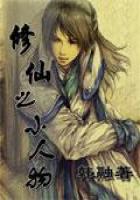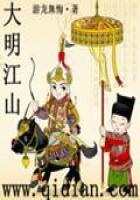Finding that birds were not very numerous, and hearing much of Labuan Tring at the southern extremity of the bay, where there was said to be much uncultivated country and plenty of birds as well as deer and wild pigs, I determined to go there with my two servants, Ali, the Malay lad from Borneo, and Manuel, a Portuguese of Malacca accustomed to bird-skinning. I hired a native boat with outriggers to take us with our small quantity of luggage, on a day's rowing and tracking along the shore brought us to the place.
I had a note of introduction to an Amboynese Malay, and obtained the use of part of his house to live and work in. His name was "Inchi Daud" (Mr. David), and he was very civil; but his accommodations were limited, and he could only hire me part of his reception-room. This was the front part of a bamboo house (reached by a ladder of about six rounds very wide apart), and having a beautiful view over the bay. However, I soon made what arrangements were possible, and then set to work. The country around was pretty and novel to me, consisting of abrupt volcanic hills enclosing flat valleys or open plains. The hills were covered with a dense scrubby bush of bamboos and prickly trees and shrubs, the plains were adorned with hundreds of noble palm-trees, and in many places with a luxuriant shrubby vegetation.
Birds were plentiful and very interesting, and I now saw for the first time many Australian forms that are quite absent from the islands westward. Small white cockatoos were abundant, and their loud screams, conspicuous white colour, and pretty yellow crests, rendered them a very important feature in the landscape. This is the most westerly point on the globe where any of the family are to be found. Some small honeysuckers of the genus Ptilotis, and the strange moundmaker (Megapodius gouldii), are also here first met with on the traveller's journey eastward. The last mentioned bird requires a fuller notice.
The Megapodidae are a small family of birds found only in Australia and the surrounding islands, but extending as far as the Philippines and Northwest Borneo. They are allied to the gallinaceous birds, but differ from these and from all others in never sitting upon their eggs, which they bury in sand, earth, or rubbish, and leave to be hatched by the heat of the sun or by fermentation. They are all characterised by very large feet and long curved claws, and most of the species of Megapodius rake and scratch together all kinds of rubbish, dead leaves, sticks, stones, earth, rotten wood, etc., until they form a large mound, often six feet high and twelve feet across, in the middle of which they bury their eggs. The natives can tell by the condition of these mounds whether they contain eggs or not; and they rob them whenever they can, as the brick-red eggs (as large as those of a swan) are considered a great delicacy. A number of birds are said to join in making these mounds and lay their eggs together, so that sometimes forty or fifty may be found. The mounds are to be met with here and there in dense thickets, and are great puzzles to strangers, who cannot understand who can possibly have heaped together cartloads of rubbish in such out-of-the-way places; and when they inquire of the natives they are but little wiser, for it almost always appears to them the wildest romance to be told that it is all done by birds. The species found in Lombock is about the size of a small hen, and entirely of dark olive and brown tints. It is a miscellaneous feeder, devouring fallen fruits, earthworms, snails, and centipedes, but the flesh is white and well-flavoured when properly cooked.
The large green pigeons were still better eating, and were much more plentiful. These fine birds, exceeding our largest tame pigeons in size, abounded on the palm-trees, which now bore huge bunches of fruits--mere hard globular nuts, about an inch in diameter, and covered with a dry green skin and a very small portion of pulp. Looking at the pigeon's bill and head, it would seem impossible that it could swallow such large masses, or that it could obtain any nourishment from them; yet I often shot these birds with several palm-fruits in the crop, which generally burst when they fell to the ground. I obtained here eight species of Kingfishers; among which was a very beautiful new one, named by Mr. Gould, Halcyon fulgidus. It was found always in thickets, away from water, and seemed to feed on snails and insects picked up from the ground after the manner of the great Laughing Jackass of Australia. The beautiful little violet and orange species (Ceyx rufidorsa) is found in similar situations, and darts rapidly along like a flame of fire. Here also I first met with the pretty Australian Bee-eater (Merops ornatus). This elegant little bird sits on twigs in open places, gazing eagerly around, and darting off at intervals to seize some insect which it sees flying near; returning afterwards to the same twig to swallow it.
Its long, sharp, curved bill, the two long narrow feathers in its tail, its beautiful green plumage varied with rich brown and black and vivid blue on the throat, render it one of the most graceful and interesting objects a naturalist can see for the first time.
Of all the birds of Lombock, however, I sought most after the beautiful ground thrushes (Pitta concinna), and always thought myself lucky if I obtained one. They were found only in the dry plains densely covered with thickets, and carpeted at this season with dead leaves. They were so shy that it was very difficult to get a shot at them, and it was only after a good deal of practice that I discovered low to do it. The habit of these birds is to hop about on the ground, picking up insects, and on the least alarm to run into the densest thicket or take a flight close to the ground. At intervals they utter a peculiar cry of two notes which when once heard is easily recognised, and they can also be heard hopping along among the dry leaves.















